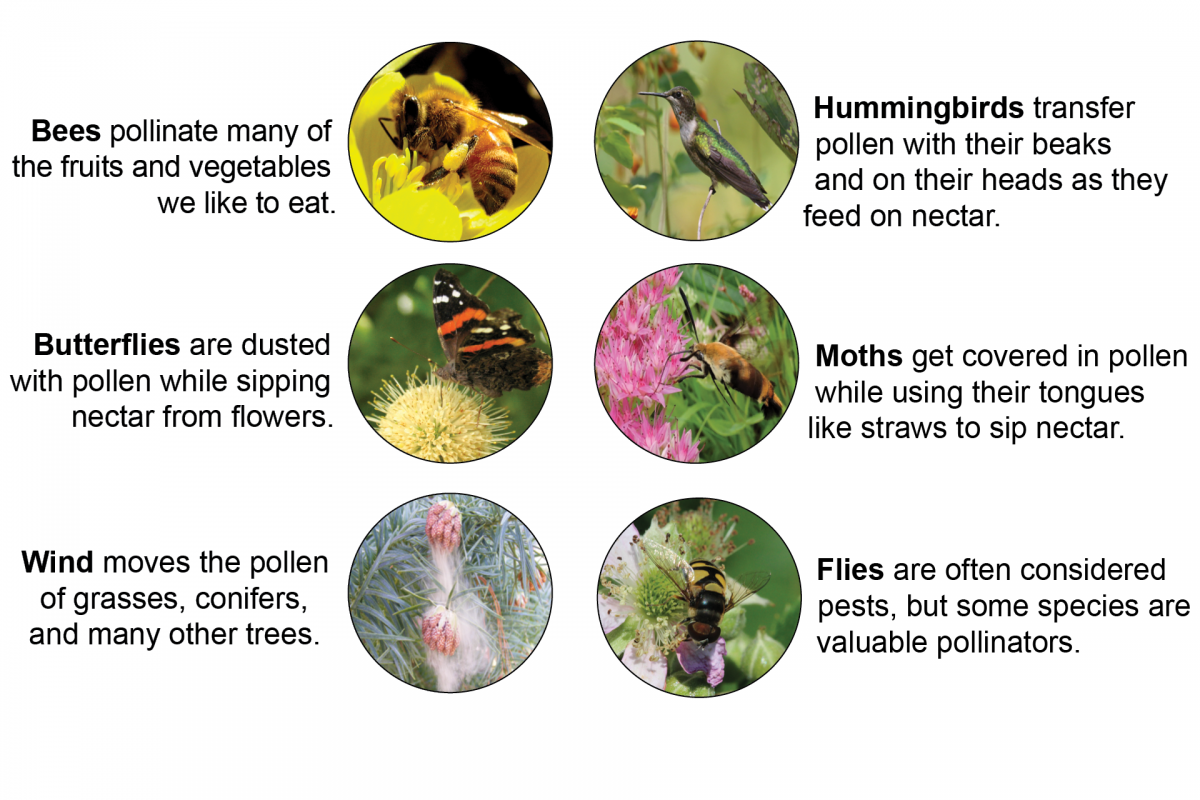
Pollinators of the Palouse

What is Pollination?
Pollination is the act of transferring pollen grains from the male anther of a flower to the female stigma. The goal of every living organism, including plants, is to create offspring for the next generation. One of the ways that plants can produce offspring is by making seeds.
Who are the Pollinators?
Pollinators are a group of animals that move from plant to plant while searching for protein-rich pollen or high energy nectar to eat. As they go, they are dusted by pollen and move it to the next flower, fertilizing the plant and allowing it to reproduce and form seeds, berries, fruits and other plant foods that form the foundation of the food chain for other species including humans.They all play a crucial role in plant reproduction and our ecosystem.
Pollinators are themselves an important food source for other wildlife. Countless birds, mammals, reptiles and amphibians eat the protein and fat-rich eggs, larvae, or adult forms of pollinators, or feed them to their young. Pollinators play a critical role in the food supply for wildlife and people. But pollinators worldwide are in trouble and are declining.
“If the bee disappeared off the surface of the globe, then man would have only four years of life left. No more bees, no more pollination, no more plants, no more animals, no more man.”
-Albert Einstein
Filmmaker Louie Schwartzberg shows us the intricate world of pollen and pollinators with gorgeous high-speed images from his film "Wings of Life," inspired by the vanishing of one of nature's primary pollinators, the honeybee.




